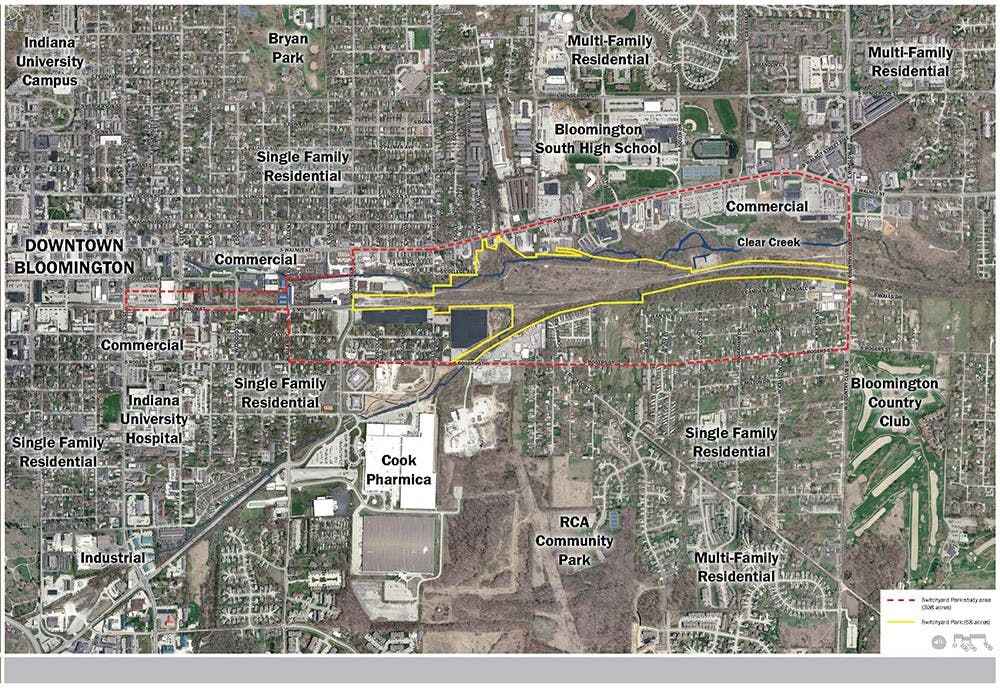Wednesday night, the city council met to consider the possibility of issuing a $25 million bond to the department in order to fund the construction of ?Switchyard Park.
“In terms of cost and scope, it’s the most significant development project in the history of this department,” Mick Renneisen, the director of the department, said. “The goal is to take an area that’s really ugly and unsightly and turn it into something that will spur development in the ?community.”
Located at 245 W. Grimes Lane, the 58 acres of land is the former hub of Bloomington’s railroad industry. After turning the site of the railroad tracks into the B-Line Trail in 2011, the city government set its sights on the Switchyard property.
City officials launched a campaign to collect feedback from the community on what they would like for the park and then created a “Switchyard Park Master Plan” that outlines the design and features the park is likely to have.
“We think the biggest element will be the performance space,” Renneisen said. “There will be a large stage for people to have plays and concerts and weddings. We’re probably also going to have a large great lawn space that would accommodate up to 10,000 people. There’s nothing else like it in Bloomington.”
Additionally, the park will be home to an above-ground water feature with music and lights — think Disney World — a dog park, either basketball or tennis courts, trails and gardens, Renneisen said.
A long and linear piece of property, Switchyard will be approximately the size of two Bryan Parks. Because of the pollution resulting from years as a railroad station, the site contains a significant amount of coal ash and will have to be capped with either soil or asphalt.
The funding for the park is available through a Tax Increment Financing district bond. These bonds are created with tax money that is set aside by local government specifically for projects that encourage economic activity in the ?district.
Because the city council combined five different TIF districts in April, there is now a district to fund projects like the park.
“I never thought that we would be able to assemble the funding to do it all at once,” Renneisen said. “It’s thrilling. I’m so happy for the community.”
City council members will vote May 20 on whether or not they will provide the funding. If they do, Renneisen estimates that it will take about one year to finalize the designs and find a contractor, and two years to build the project.
“All kinds of groups have been represented in planning for this park,” Renneisen said. “We know what the people want, and what I’ve heard from the council indicates that we have their support.”






